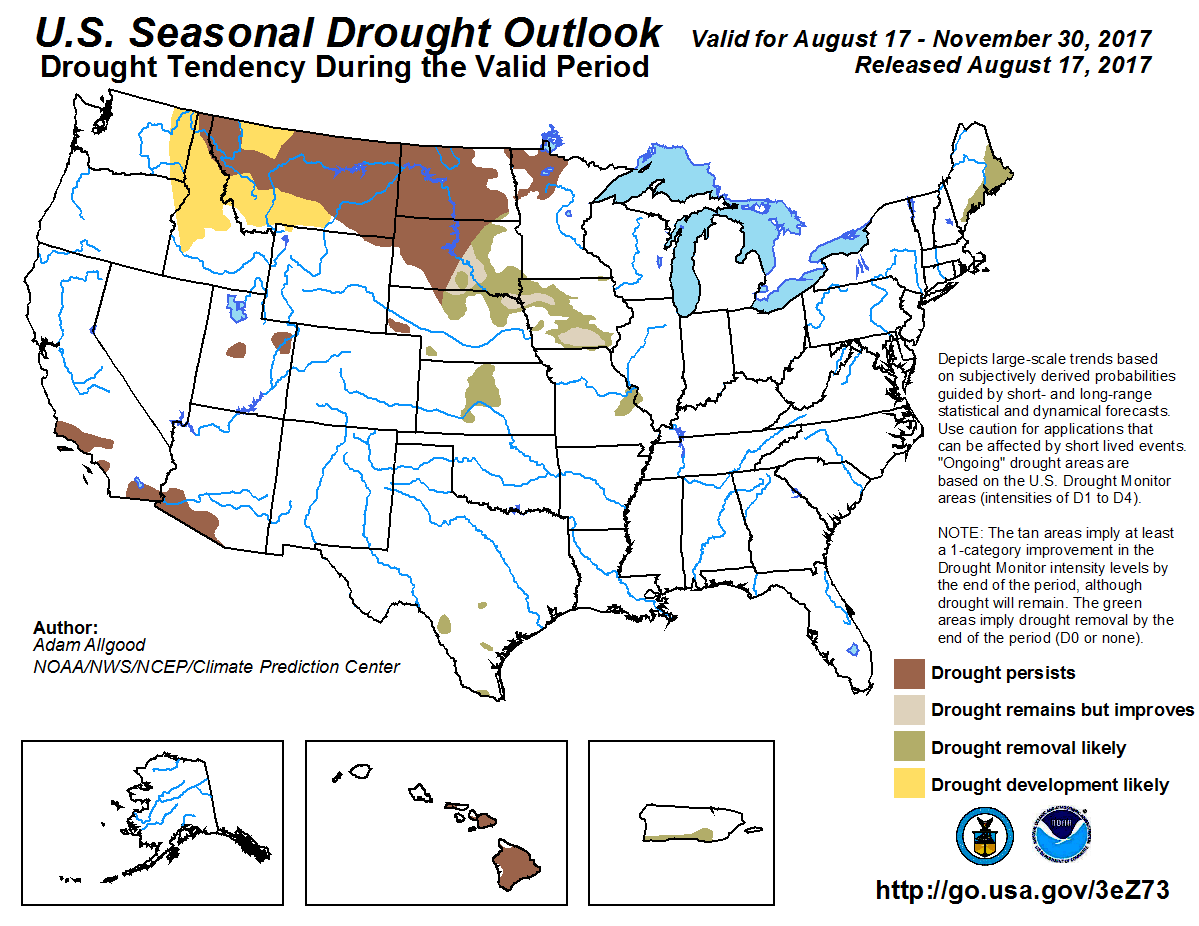
The U.S. Drought Monitor (USDM) is a weekly collaborative product that provides a general summary of current drought conditions. Since 1999, the National Drought Mitigation Center (NDMC), NOAA Climate Prediction Center (CPC), National Integrated Drought Information System (NIDIS), USDA, and the University of Nebraska have been sharing data and drought information to produce a weekly assessment of drought for the U.S. and its territories. The USDM synthesizes physical drought indicators, including precipitation and soil moisture, and field reports and news accounts are reviewed and synthesized.
NIDIS was established by Congressional Act in 2006 to implement an integrated drought monitoring and forecasting system at federal, state, and local levels. NIDIS’ responsibilities include drought monitoring, forecasting, response, research, and education as part of its Drought Early Warning System (DEWS). These components are featured within the U.S. Drought Portal and were created to allow for governments of all scales to prepare for and act upon drought conditions. NIDIS’ goal is “to improve the nation’s capacity to manage drought-related risks by providing the best available information and tools to assess the potential impacts of drought, and to prepare for and mitigate the effects of drought.”
Predicting drought remains a challenge. Global weather patterns, which affect the location and intensity of precipitation, are constantly changing and are difficult to predict on drought timescales. NOAA CPC’s U.S. Monthly and Seasonal Drought Outlooks show predicted trends for areas currently experiencing drought and indicate areas where droughts may develop. The Drought Outlooks take many factors into consideration, including short and long-range forecasts, regional drought history, and climate anomaly patterns (“teleconnections”). In the coming decades, water management strategies will need to address rising global temperatures, more variable precipitation and groundwater depletion, and how these factors heighten the potential for worsening drought conditions in the U.S.